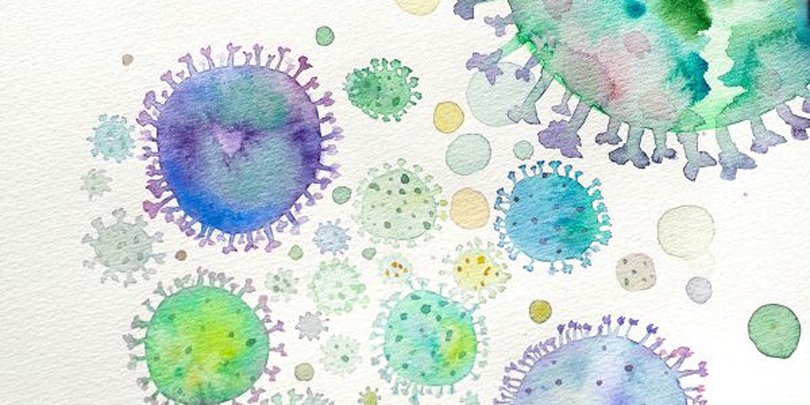Following the move to online art therapy, BAAT responded through information-sharing with the British Association of Drama Therapists and the sharing of online resources with the American Association of Art Therapists. The most current guidance documents were made available to members in March 2020 and are available on the BAAT website. Many art therapists have also responded by sharing their experiences of this new format through the BAAT special interest groups, and we are currently drawing on member’s experiences to inform a comprehensive, ethical and practical BAAT guideline document for art therapists. The information presented here is a working document based on our experiences so far, and we are deeply indebted to Sophie Benoit’s working experience, and Cathy Malchiodi’s work on the online ethical guidelines framework, researched and presented in her book ‘Art Therapy and Computer Technology’ (2000).
Ethics, legal and best practice issue
Art Therapists working online are expected to meet HCPC standards:
https://www.hcpc-uk.org/standards/standards-of-proficiency/
https://www.hcpc-uk.org/standards/standards-of-conduct-performance-and-ethics/
Art therapists working online should demonstrate that they have undertaken further CPD to facilitate online art therapy treatment. This may be done in different ways: e.g. attending an online or in-person training, reading books and articles on art therapy online practice, participating in BAAT and other professional forums where this issue is addressed, etc. They must understand technology terms, laws, risks and benefits and ensure they also attend CPD training on IT if they feel that their working knowledge of these issues is not up-to-date. They also should be supervised by someone competent to understand the issues of online art therapy practice.
BAAT Guidance for GDPR Compliance must be adhered to (do check regularly for updates). Practising art therapy online will vary from one country to another, check other countries’ law jurisdiction. Language and culture barriers can result in competence issues. Professional Indemnity Insurance must cover the e-therapy and cross-country borders’ practice.
Art therapists must keep in mind that any information exchanged via the Internet is recorded forever and not secure because there is always a risk of being hacked. Art therapists must register with ICO (Information Commissioner’s Office) and comply with the Privacy & Electronic Communications Regulations https://ico.org.uk
A few media/platforms considerations
VoIP (Voice over Internet Protocol)allows people to make calls via the Internet rather than use a traditional phone. There are abundant VoIP service providers, but the connection can still become a real issue and detrimental for vulnerable clients when it is interrupted because of poor internet broadband connection. Providing therapy online requires an understanding of VoIP data privacy policy and must meet GDPR regulations.
Online platforms
There are many different online platforms suitable for art therapy including Skype, WhatsApp, Hangouts, Meetup, Zoom, etc. Most provide security settings to ensure confidentiality, but none are 100% failsafe. You will need to explore which platforms suit you and your clients best, and to ensure you activate all the appropriate security settings when you work. There are limits of age and consent which may also influence your choice of platform so please check if the age of your client allows them access to the online tool. Children and Young People (CYP) must be at least:
- 16 to use WhatsApp
- 13 to use Facebook
- 13 to use Skype
- 13 to use Outlook email
- 13 to use Gmail
- Old enough to consent to the legal terms of service for Zoom Video conferencing
Locking/encrypting emails & attachments
When sending clients’ sensitive data as an email attachment e.g. (referrals, images, consent forms, reviews and outcomes, invoices) with your email services (google mail, Yahoo, Hotmail, Outlook) it is important to lock/encrypt the email before it is sent. If you are unsure of how to do this, search online how your email provider has set this up as each uses a different protocol.
The Cloud storage platform
According to the ICO “if you choose to store your files in the cloud you need to remember that this means they are really stored on servers controlled by the cloud service provider”. (ICO, https://ico.org.uk/your-data-matters/online/cloud-computing/)
Data Protection when working online
Art therapists must inform and help clients to understand how their data will be used, and what the risks are when data is shared (emails, GP, Multidisciplinary Team, Supervisions, Online Publications). Clients must sign individual consents to the use the online art therapy.
The consent form needs to clearly state the online risks when working online. Art therapists should continue to include information about safeguarding protocols and when they may need to breach confidentiality (for example when there is a risk of harm to the client or others or where there is a legal duty of disclosure). Clients should be informed of the sharing of artworks with clinical supervisors.
Consent from Children & Young People (CYP) and their parent/guardian must be sought to do online therapy and include:
- The technical requirements to allow the session to take place without interruption
- The policy and guidance of any organisation you are working for or subcontracted by regarding alternative therapy provision
Art therapists should obtain written consent from the CYP’s legal guardians before engaging in online art therapy. Dyadic art therapy where both parent and child engage in the therapeutic process together is also an approach to consider if it is appropriate and helpful.
Safety of Clients
Art therapist practitioners should take reasonable steps to ensure that clients are in a safe physical environment and
- Obtain clients’ contact details/GP/ Next of Kin
- Include information about the safe use of technologies in the online art therapy information pack
- If the internet breaks down confirm the arrangement to reconnect
- If re-connection is not possible agree to phone or e-mail client to reschedule the online session
- Clients must have access to support in case of emergency, such as contacting their GP, close family members or friends
E-duty of care:
Safeguarding laws and policies apply to online work and art therapists need to maintain their duty of care towards their clients; this may involve initiating safeguarding protocols if there are any serious concerns for their personal safety or the safety of others. Online work may make this more complex and it is often hard to intervene in an emergency when using the phone or video conferencing. For instance, if clients hang-up or leave the virtual art therapy studio because of having anger management difficulties, we suggest calling back and sending a follow up email.
Below are a few suggestions and recommendations which include an e-Emergency action plan:
- Having contact numbers for next of kin, friends, etc.
- Having emergency contact numbers if linked to a team/organisation
- Knowing what local help is available
- Asking where the client is, his/her mobile number and e-mail
- Making regular phone check-ups to see how the client is doing
Red flag emergency phone intervention includes all information above and may include sending clients to hospital, referring to GP or calling an ambulance, as well as sending a red flag signal to the multidisciplinary team and supervisor requesting urgent discussion.
When working with children or young adults, please consider the following legal issues:
- e-law childrens’ rights and data protection issues affecting children and young people
- e-Safety framework must be in place
- e-Parental ethics and law: e-Safeguarding when working with CYPs
Please consult regularly websites such as the NSPCC for updates on e-Safeguarding for vulnerable children and young people. This area of practice is developing, so stay up-to-date with new recommendations which you will also receive through BAAT. BAAT has issued guidelines and recommendations on these issues and continues to update these. They can be accessed within the members’ area of the BAAT website https://www.baat.org/Membership/Documents/Professional-Advice
Digital artworks with CYP
Art therapists working online must request the child’s permission to screenshot the child’s images. Subsequently, it enables the online art therapy sessions to remain confidential and for virtual art therapists to protect the child’s best interest as no images are saved on the parent’s laptop.
Art therapists working online remain responsible for children’s images and their portfolio like in face-to-face art therapy.
Online practice issues
Below is an initial outline of how to deliver best online art therapy practice; we are indebted to the work of Cathy Malchiodi (2000) - see her book ‘Art Therapy and Computer Technology: a virtual studio of possibilities’. This will be reviewed as we learn more about this practice and we aim to develop BAAT approved guidelines. We will consult members, service users and carers to ensure we reflect and integrate a range of perspectives and experiences.
Establishing an online art therapy service
- Develop a reliable and appropriate intake and assessment procedure
- Inform clients about the instances where online art therapy may not be appropriate
- Inform clients of the limitations, risks and benefits of online art therapy
- Evaluate the client’s capacity to utilise online art therapy
- Establish lines of communication between therapist and client regarding the frequency and mode of online review and evaluation of the benefits and outcomes of therapy
- Confirm the fee and method of payment, invoicing and receipts online
- Establish procedures to follow in an emergency (Malchiodi, 2000, pp.121-131)
Working within one’s competencies
- In order to work within one’s professional competencies art therapists must seek access to training and support in this specialist area and develop the necessary skills and proficiencies in online art therapy
- Develop peer review, support and supervision with colleagues and special interest groups to share knowledge and experience
- To seek supervision from colleagues who use online therapy approaches and methods
- Art therapists should remain within their boundaries of competence, and not attempt to address all problems online
- Familiarise and experiment with different online formats, technology and equipment
- Consider social and cultural dimensions to the work and equality of access to online services
- Access research on computer-based counselling and therapy
- Develop evaluation and outcome research in this area
Provide an initial informative online introduction pack containing the following details
- Confidentiality arrangement, risks and security safeguards
- Identification of the therapist including registration details, qualifications and insurance
- ICO registration and GDPR requirements
- Digital copy of all artwork sharing – reason and method
- Use of email communication protocol agreement
- Storage of e-mails and digital artworks
- Evaluation and retrospective review online – frequency and method
Digital copy and sharing of artwork
In order to maintain the therapeutic frame which is unique to art therapy it is important to request the sharing of all artworks, images and objects made during the therapy session, an initial agreement will include the following:
- Initial request and consent form
- An agreed means of digital transfer e.g. by email with digital image attachment, which is then downloaded to a secure hard drive
- Clarify reasons for keeping a digital folder of the client’s artworks
- Clarify the digital review and retrospective review of artworks and online art therapy including the frequency and format
- Clarify the secure storage arrangements for all digital artworks
- Clarify the requirement to share digital artworks in clinical supervision
Until an approved comprehensive, ethical and practical BAAT guideline document is published, we hope that that the above information, based on our working experience and Cathy Malchiodi’s online ethical guidelines framework, will be helpful for art therapists who are urgently adapting their practice to meet the needs of their clients during this global COVID-19 pandemic.
References
Malchiodi, C. A., (2000) Art Therapy and Computer Technology: a virtual studio of possibilities. London, Philadelphia: Jessica Kingsley Publishers.
Copyright (c) The British Association of Art Therapists (BAAT)
This article is published in BAAT Newsbriefing Summer 2020 and may not be distributed or published without the consent of BAAT



